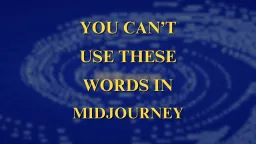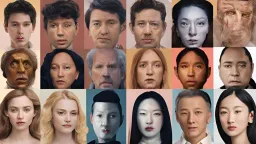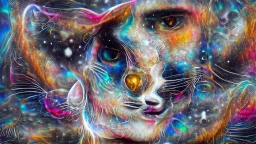What is SHOW-1 and Showrunner in Multi-Agent Simulations?

Let us enter the space of artificial intelligence, where simulations come alive with the power of multi-agent systems. These advanced technologies allow us to enter the complex scenarios and observe interactions between intelligent agents in a virtual environment. One key element that enhances the realism and effectiveness of these simulations is SHOW-1 – an innovative framework that brings life-like dynamics to multi-agent simulations.
But what exactly is SHOW-1? And how does it work alongside Showrunner Agents in the AI space? let us see what SHOW-1 and Showrunner Agents do in multi-agent simulations?
What is SHOW-1?
SHOW-1 (Self-Helping Open World) is a powerful framework designed to enhance the realism and dynamics of multi-agent simulations in the field of artificial intelligence. It introduces a unique approach that allows agents to autonomously learn and adapt their behavior based on environmental cues and interactions with other agents.
At its core, SHOW-1 aims to create an open-world environment where agents have the freedom to explore, make decisions, and learn from their experiences.
Unlike traditional simulation frameworks that rely on pre-programmed rules or fixed behaviors, SHOW-1 works differently. It empowers agents with the ability to self-generate goals and dynamically adjust their strategies as they navigate through complex scenarios.
This revolutionary framework enables a high degree of autonomy for individual agents while still maintaining overall coherence within the simulation. Each agent operates independently but also interacts with others in real-time, leading to emergent behaviors and realistic social dynamics.
By leveraging machine learning techniques such as reinforcement learning and deep neural networks, SHOW-1 brings about adaptive decision-making capabilities for individual agents. This means that each agent can continuously improve its performance over time by evaluating different actions based on rewards or penalties received during interactions.
The flexibility offered by SHOW-1 opens up endless possibilities for creating robust simulations across various domains like traffic management systems, crowd control scenarios, economic modeling, and even video game AI development. With its emphasis on self-learning and adaptation in dynamic environments, SHOW-1 pushes the boundaries of what is possible in multi-agent simulations.
Intriguingly enough though – if you think this sounds impressive already – there’s more! Showrunner Agents complement this remarkable framework by acting as intelligent supervisors within the simulation. They oversee multiple sub-agents’ activities by providing guidance when needed or intervening in critical situations. These showrunners enhance coordination among agents while ensuring efficient execution of tasks within the simulated world.
Now, let’s move forward to explore the role of Showrunner Agents and how they work together with this.
What is a Showrunner Agent?
In the world of multi-agent simulations, a showrunner agent plays a crucial role in orchestrating the actions and interactions among other agents. Think of it as the director behind the scenes, calling the shots and ensuring that everything runs smoothly.
The showrunner agent acts as both an observer and a decision-maker. It monitors the behavior and performance of other agents in the simulation, collecting data and analyzing patterns. Based on this information, it can make informed decisions about how to influence or intervene in certain situations.
One key aspect of a showrunner agent is its ability to adapt and learn from experience. Through machine learning techniques, it can improve its decision-making abilities over time, becoming more effective at achieving desired outcomes.
By taking on this managerial role, showrunner agents bring order and structure to complex multi-agent simulations. They help coordinate actions, resolve conflicts, and optimize overall performance. Without them, these simulations would be chaotic and unproductive.
Showrunner agents are like conductors guiding an orchestra of individual players towards a harmonious symphony. Their presence ensures that multi-agent simulations achieve their goals efficiently while providing valuable insights into complex systems dynamics.
How do SHOW-1 and Showrunner Agents Work in Multi-Agent Simulations?
SHOW-1 and Showrunner Agents are two essential components in multi-agent simulations that enable the simulation of complex real-world scenarios. In these simulations, multiple agents with different roles interact with each other to simulate realistic behavior and decision-making processes.
So, how exactly do SHOW-1 and Showrunner Agents work in these simulations? SHOW-1 is a software framework that provides the infrastructure for creating and managing multi-agent simulations. It allows developers to define the agents’ behaviors, interactions, and relationships within the simulation environment.
Showrunner Agents, on the other hand, act as orchestrators or managers within the simulation. They coordinate the actions of other agents by providing them with goals, tasks, or objectives. These showrunners have a high-level view of the entire simulation and make decisions based on various factors such as agent performance or external events.
Through this coordination mechanism, SHOW-1 enables complex interactions between agents in a simulated environment. The showrunners play a crucial role in ensuring that all agents are working towards their goals while also considering constraints and conflicts that may arise during interaction.
By simulating real-world scenarios using SHOW-1 and Showrunner Agents, researchers can gain insights into various domains such as social dynamics, economics, transportation systems, or even disaster response planning.These simulations provide a safe space for testing hypotheses without real-life consequences.
The ultimate goal of all these is Artificial General Intelligence (AGI).
Industries like gaming benefit from these simulation techniques by creating immersive virtual worlds populated with intelligent non-player characters (NPCs). The showrunner agent acts as a director behind the scenes orchestrating NPC actions based on predefined rules or learned behaviors. This enhances player experience by offering challenging gameplay scenarios while maintaining an element of unpredictability.
Let us see the recent developments in the field of multi-agent simulation with a real life examples.
The Simulation by Fable
Edward Saatchi, Pete Billington, Frank Carey and Jessica Shamash from Fable discussed “The Simulation” at the GamesBeat summit. It’s a new project the team is working on.
Instead of a single character powered by AI, it’s an actual simulation. The Simulation’s ultimate goal is to achieve a complete artificial general intelligence(AGI) based on player feedback.
This new project is firstly a tool to train AI’s. Fable believes that many, many users, all training their own versions of AI’s, is the key to an artificial general intelligence.

They have created a SHOW-1 AI technology that can write, produce, direct, animate, and even voice new episodes of TV shows. An image with random noise can be used and gradually transformed into the desired image by adding and removing random noise over time.
The team has made use of large language models (LLMs), custom diffusion models, and multi-agent simulation for contextualization. They have also used story progression and behavioral control, and tried to generate high-quality episodic content for IPs (Intellectual Property).
Fables simulation redefined an episode of the TV show by changing dialogue sequences in specific locations and runtime to match its original length. Simulation data was used as a prompt chain to develop a story system that runs alongside the showrunner’s system to monitor the sequence of actions and dialogues. Each character’s voice has been cloned in advance, and voice clips are generated for every new exchange.
Since the LLMs such as GPT-4 are fed with large datasets of TV shows, they can be used to rewrite an entire season.
The OpenAI Co-founder Greg Brockman said “That Is What Entertainment Will Look Like. Maybe people are still upset about the last season of Game of Thrones. Imagine if you could ask your A.I. to make a new ending that goes a different way and maybe even put yourself in there as a main character or something.” and it’s not far from being a reality.
Read more on the Research paper
The team aims to advance this further and take “The simulation” to the next level. All we can do is wait and watch, on what comes next.
Conclusion
As AI continues to evolve rapidly, simulation techniques like SHOW-1 will undoubtedly play a significant role in understanding real-world phenomena. Whether it’s unraveling intricate social dynamics or optimizing resource allocation strategies—multi-agent simulations offer valuable insights that drive innovation across industries.
Let us embrace this journey where AI-powered multi-agent simulations bring us closer to uncovering deeper truths about our complex world!
Follow us on Instagram, Facebook, and Twitter!
Read on AI and NFT fusion









